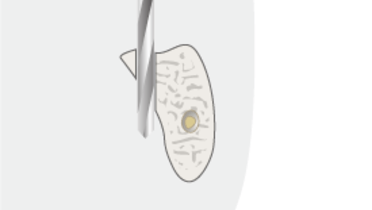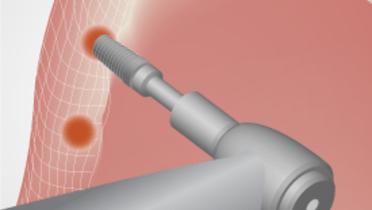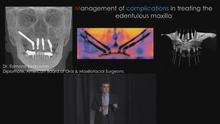-
0
Patient Assessment
- 0.1 Patient demand
- 0.2 Overarching considerations
- 0.3 Local history
- 0.4 Anatomical location
- 0.5 General patient history
-
0.6
Risk assessment & special high risk categories
- 5.1 Risk assessment & special high risk categories
- 5.2 age
- 5.3 Compliance
- 5.4 Smoking
- 5.5 Drug abuse
- 5.6 Recreational drugs and alcohol abuse
- 5.7 Parafunctions
- 5.8 Diabetes
- 5.9 Osteoporosis
- 5.10 Coagulation disorders and anticoagulant therapy
- 5.11 Steroids
- 5.12 Bisphosphonates
- 5.13 BRONJ / ARONJ
- 5.14 Radiotherapy
- 5.15 Risk factors
-
1
Diagnostics
-
1.1
Clinical Assessment
- 0.1 Lip line
- 0.2 Mouth opening
- 0.3 Vertical dimension
- 0.4 Maxillo-mandibular relationship
- 0.5 TMD
- 0.6 Existing prosthesis
- 0.7 Muco-gingival junction
- 0.8 Hyposalivation and Xerostomia
- 1.2 Clinical findings
-
1.3
Clinical diagnostic assessments
- 2.1 Microbiology
- 2.2 Salivary output
-
1.4
Diagnostic imaging
- 3.1 Imaging overview
- 3.2 Intraoral radiographs
- 3.3 Panoramic
- 3.4 CBCT
- 3.5 CT
- 1.5 Diagnostic prosthodontic guides
-
1.1
Clinical Assessment
-
2
Treatment Options
- 2.1 Mucosally-supported
-
2.2
Implant-retained/supported, general
- 1.1 Prosthodontic options overview
- 1.2 Number of implants maxilla and mandible
- 1.3 Time to function
- 1.4 Submerged or non-submerged
- 1.5 Soft tissue management
- 1.6 Hard tissue management, mandible
- 1.7 Hard tissue management, maxilla
- 1.8 Need for grafting
- 1.9 Healed vs fresh extraction socket
- 1.10 Digital treatment planning protocols
- 2.3 Implant prosthetics - removable
-
2.4
Implant prosthetics - fixed
- 2.5 Comprehensive treatment concepts
-
3
Treatment Procedures
-
3.1
Surgical
-
3.2
Removable prosthetics
-
3.3
Fixed prosthetics
-
3.1
Surgical
- 4 Aftercare
Problems and complications in maxillary implant placement surgery
Key points
- 在涉及种植体植入或骨移植的上颌中,可能会发生以下并发症:
- 缺乏初期种植体稳定性
- 种植体尖端暴露在上颌窦或鼻腔内
- 窦底提升期间发生施奈德氏膜穿孔
- 种植体或增量材料发生脱位
- 出血
并发症
在缺齿上颌中,与邻近解剖结构之间的距离以及残留骨的骨密度会影响种植体植入,可能造成诸如缺乏初期种植体稳定性、穿孔、种植体或增量材料脱位以及出血等并发症。
初期稳定性
由于上颌(主要是松质骨)的骨质,可能会导致种植体缺乏初期稳定性,并在植入后出现松动。
穿透和穿孔
如果有足够的残留骨高度来确保种植体植入和种植体初期稳定性,则植床制备期间发生的上颌窦或鼻腔穿透便是一个小问题。种植体尖端插入上颌窦内的深度不应超过 2 mm。
脱位
增量材料之所以发生移位而进入鼻窦,是因为在上颌窦移动和增量手术中,施奈德氏膜出现穿孔 [Katranji 2008]。
种植体可能会发生脱位而进入上颌窦。种植体/增量材料长期留在鼻窦内会引起上颌窦急性或慢性感染。种植体和/或增量材料发生脱位后,应通过经口或经鼻入路而摘除。在行外科手术之前,建议进行 3D 造影,例如计算机断层扫描 (CT) 或锥形束计算机断层扫描 (CBCT) [Sgaramella 2014]。
出血
吻合血管位于上牙槽后动脉和眶下动脉之间的面部窦壁处。在窦提升手术期间,可能会发生出血。随着侧窦壁宽度的增加,血管直径也随之增加,从而导致手术期间发生出血的风险增加。从窦底和牙槽嵴到血管下缘的平均距离分别介于 8-17 mm 之间。术中出血的治疗包括:按压、骨蜡、用外科钻磨光和电烙术 [Kang 2013]。




